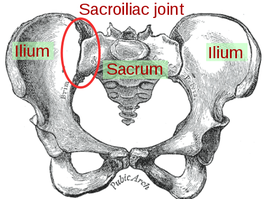- Home
- About Us
- TSPT Academy
- Online Courses
-
Resources
- Newsletter
- Business Minded Sports Physio Podcast
- Day in the Life of a Sports PT
- Residency Corner
-
Special Tests
>
-
Cervical Spine
>
- Alar Ligament Test
- Bakody's Sign
- Cervical Distraction Test
- Cervical Rotation Lateral Flexion Test
- Craniocervical Flexion Test (CCFT)
- Deep Neck Flexor Endurance Test
- Posterior-Anterior Segmental Mobility
- Segmental Mobility
- Sharp-Purser Test
- Spurling's Maneuver
- Transverse Ligament Test
- ULNT - Median
- ULNT - Radial
- ULNT - Ulnar
- Vertebral Artery Test
- Thoracic Spine >
-
Lumbar Spine/Sacroiliac Joint
>
- Active Sit-Up Test
- Alternate Gillet Test
- Crossed Straight Leg Raise Test
- Extensor Endurance Test
- FABER Test
- Fortin's Sign
- Gaenslen Test
- Gillet Test
- Gower's Sign
- Lumbar Quadrant Test
- POSH Test
- Posteroanterior Mobility
- Prone Knee Bend Test
- Prone Instability Test
- Resisted Abduction Test
- Sacral Clearing Test
- Seated Forward Flexion Test
- SIJ Compression/Distraction Test
- Slump Test
- Sphinx Test
- Spine Rotators & Multifidus Test
- Squish Test
- Standing Forward Flexion Test
- Straight Leg Raise Test
- Supine to Long Sit Test
-
Shoulder
>
- Active Compression Test
- Anterior Apprehension
- Biceps Load Test II
- Drop Arm Sign
- External Rotation Lag Sign
- Hawkins-Kennedy Impingement Sign
- Horizontal Adduction Test
- Internal Rotation Lag Sign
- Jobe Test
- Ludington's Test
- Neer Test
- Painful Arc Sign
- Pronated Load Test
- Resisted Supination External Rotation Test
- Speed's Test
- Posterior Apprehension
- Sulcus Sign
- Thoracic Outlet Tests >
- Yergason's Test
- Elbow >
- Wrist/Hand >
- Hip >
- Knee >
- Foot/Ankle >
-
Cervical Spine
>
- I want Financial Freedom
- I want Professional Growth
- I want Clinical Mastery
 We are once again back on the topic of SIJ Dysfunction. A couple months ago, we had a pretty controversial post about non-painful sacroiliac joint dysfunction. A large part of our discussion was on the basis of how limitations in SIJ mobility could alter the normal stresses in adjacent joints. While we still believe this is an important aspect, in the past few weeks we have become aware of yet another reason for regularly assessing the sacroiliac joint. Something that is often lost in the effects of SIJ dysfunction is impact on muscle alignment. Any time there is a deficiency in the alignment of the joint surfaces, the origin or insertion of the muscles are altered, thus changing the moment arm of the muscle as it crosses its respective joint. These changes may seem small and insignificant, but they can result in both muscle pain and weakness. The significance of a muscle alignment issue is that these patients will likely not have many positive pain provocation tests, because it is not the joint that is painful - it is the muscle (or structures near the muscle). Therefore, when assessing the sacroiliac joint, be sure to assess the symmetry and depth of SIJ structures such as the PSIS, sacral sulci, sacral ILAs, ischial tuberosities, and more. In the past few weeks, we have had multiple patients with pain or weakness that was eliminated or minimized simply by doing a sacral mobilization or other manual technique to correct the asymmetry. These patient's had negative pain provocation testing but noticeable bony landmark asymmetries. We are aware of the fact that SI mobility tests are unreliable according to several research studies, but we again argue that they should not be forgotten. This brings up the importance of testing and re-testing after a treatment. A muscle that appeared weak initially in your eval may be normal after correction. If you can show immediate changes in pain and strength from a treatment directed at the SIJ, not only will it potentially alter your plan of care, but it also builds your patients' confidence in you as a clinician!
1 Comment
10/11/2023 12:58:22 am
Exploring topics related to musculoskeletal disorders such as pain provocation tests for sacroiliac joint (SIJ) dysfunction often raises intriguing questions about unrelated subjects. In the realm of magic and illusion, one might wonder, "why aren't there more female magicians?" This intriguing question, although unrelated to SIJ dysfunction, reflects the curiosity that spans various fields of interest, prompting researchers and enthusiasts alike to ponder the disparities and dynamics within different professions and hobbies.
Reply
Leave a Reply. |
Dr. Brian Schwabe's NEW Book in partner with PaleoHacks!
Learn residency-level content on our
Insider Access pages We value quality PT education & CEU's. Click the MedBridge logo below for TSPT savings!Archives
July 2019
Categories
All
|






 RSS Feed
RSS Feed